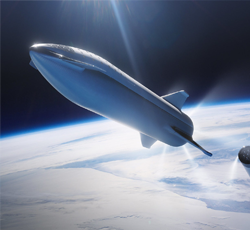
2015 Tesla Model S P85D review: With this Tesla, one plus one equals more, more, more - CNET
- by CNET
- Mar 07, 2015
- 0 Comments
- 0 Likes Flag 0 Of 5

No ignition
These useful information panels and systems lit up not when I put a key in an ignition lock (a quaint 20th century convention) but before that, when I got into the car while toting the car-shaped RFID fob. Similarly, if I had the Tesla app on my smartphone, synced with the car, I could unlock it and start it up with that. Merely putting my foot on the brake pedal made the car step from standby to let's-go mode.
Despite the massive horsepower from this Model S P85D's dual motors, keeping it under control while maneuvering through a parking garage, even with Insane model enabled, is no challenge. As with prior Model S cars I've driven, the accelerator was easy to modulate, letting me creep along at 5 mph, hold at 45 mph, or accelerate past 60 mph. With its direct electric power to the motors, the Model S P85D is dead easy to drive. I preferred to leave Creep mode off, keeping the car at a stop if I didn't push the accelerator, but putting it in Creep would make it behave more like a typical automatic transmission car.
The Model S P85D gets more range than other electric cars and its acceleration time puts it in the supercar set.
Josh Miller/CNET
Then there's the wonder of regenerative braking, which can be set between standard and low. In standard mode it comes on strong, meaning the car slowed rapidly when I lifted off the accelerator, in turn converting more kinetic energy to electricity and storing it in the battery pack for later use. Set to Standard mode, I could almost drive the Model S P85D with one foot, letting it coast down to a stop at traffic lights.
Unlike in a hybrid gasoline-electric car, where the addition of an electric motor into the driveline does not mean an equal addition of horsepower, the extra motor in the Model S P85D contributes 100 percent of its power output to the car's total power. In this version of the Model S, the rear motor puts down 470 horsepower and the front adds 221 horsepower.
And unlike a typical gasoline engine all-wheel-drive car, where torque gets split between front and rear wheels, the Model S P85D's front motor puts all its torque to the front wheels, and the rear motor does a similar job at the rear wheels, while somewhere in the power control electronics software tells the battery how much electricity to send to each motor.
The control software enables a snow mode in the Model S P85D, reducing torque from accelerator input to make it less likely the wheels will lose traction.
During the few dry days I had with the car, there were no slippery roads to test out the dual-motor traction, but I could put the P, as in performance, to the test. Slinging the heavy Model S P85D down a twisty mountain road, it impressed me with more nimble handling than I remembered from previous versions. With the electric power steering set to Sport, the wheel turned with satisfying heft and quick, direct input to the steering rack. I felt as if the nose had retracted, giving the Model S P85D the quick turn-in of a sports car.
Pushing the tires to a tortured squeal, I began to feel the understeer of the standard Model S, but pressure on the accelerator put power to the front wheels, making them dig in for a handling assist. The sport-tuned suspension of the Model S P85D may have been a little harsh on rough asphalt, but it kept the hefty battery weight in check when inertial forces took over.
Cornering feels improved with Tesla's dual-motor system.
Josh Miller/CNET
Cruising down the highway, I got to try out another new feature of the Model S P85D, adaptive cruise control. New sensor hardware, installed in the Model S line since last October, gives the car a forward-facing camera and 360-degree radar. Turning on cruise control, the car held my set speed until it sensed slower traffic in the lane ahead, at which point it matched and held the slower speeds. This system worked as well as what I've seen in other cars, even bringing the Model S P85D to a complete stop when the car ahead stopped.
When I let the car drift over a lane line, I heard and felt a rumble strip-style warning, the new lane departure warning. However, missing was the lane keeping ability I saw in last year's introduction of the Model S P85D. This feature not only handled the steering on a curving lane, but also enacted a lane change when the driver activated the turn signal, bringing Tesla close to autonomous driving. Tesla promises to roll out new driver assistance features through over-the-air software updates for cars equipped with the new sensor hardware, but there is no definitive timeline for lane keeping assist. Advanced features, such as full steering control, will likely need refinement by Tesla and regulatory approval at federal and state levels.
One thing that does not change with the dual motor Tesla Model is are its recharge times, as the Model S P85D uses the same 85 kilowatt-hour lithium-ion battery pack as the single motor versions. The performance-oriented P85D takes a 17-mile range hit compared to its more sedate 85D sibling, but charging times remain the same. That means about 9 hours from zero to full from a standard 240-volt outlet, or about 5 hours using one of Tesla's home charging stations, which pulls greater amperage. Owners can schedule charging to take advantage of cheaper rates from a screen in the car or with the Tesla smartphone app.
The Model S P85D's navigation system also shows the location of Tesla's Supercharger stations, which can charge the car's battery up to 80 percent, 170 miles, in about 30 minutes. Tesla added a new adapter for its charging cable which lets owners plug into CHAdeMO stations, an alternative fast-charging standard used by the Nissan Leaf.
The 253 mile rated range of the Model S P85D is by no means an absolute figure. For a session of driving that involved a couple of Insane starts along with uphill and downhill mountain roads, I covered 36 miles on the odometer but burned 64 miles of the estimated range. When CNET editor Antuan Goodwin got behind the wheel, the rated range of 70 miles quickly disappeared due to freeway driving, but the car delivered useful warnings and suggestions about how to reach the destination programmed into navigation.
The Model S P85D is not only an excellent electric car, it shines among the general automotive competition in its price range.
Wayne Cunningham/CNET
Please first to comment
Related Post
4 Electric Car Prices That Tesla Can’t Beat
- Jul 30, 2025
Tesla Model 3 Wireless Charging - Jeda Review
- Jul 30, 2025
Stay Connected
Tweets by elonmuskTo get the latest tweets please make sure you are logged in on X on this browser.






 Energy
Energy


















